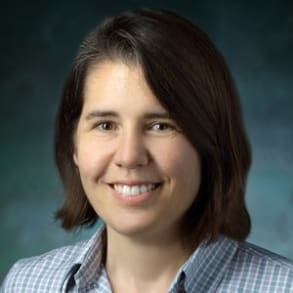Neuroscientist Angelika Doetzlhofer discusses the focus of her research, which is how the auditory organ within the inner ear develops, specifically the molecular and cellular mechanisms that guide the development of hair cells.
my laboratory is interested in how the auditory organ within our in the year develops. In particular, were investigating the molecular and cellular mechanisms that guide the development off hair cells, which are our sensory receptor cells within the inner ear. Hair cells are essential for our ability to hear, and there unfortunately only produced ones during our lifetime and their loss is permanent and hearing hearing loss by a large part caused by the death of hair cells. We hope to use the information gained from how hair cells formed during development to restore hair cells in adult animals. One of the strategies we try to pursue is to re program existing cells to become here, so progenitors in particular, we target the support cells. Support cells are specialized cells that surround the hair cells and in young animals before they start hearing. Thes supporting cells have some capacity to regenerate hair cells. However, once the animal is mature and starts hearing thes support sales lose that capacity. In a study, which was in large part funded by the David M. Rubenstein Hearing Research Center, we recently discovered that the developmental decline in regenerative capacity can be reversed by re expression off a progenitor specific gene called Lin traded B. We found that lin 20 b expression and supporting cells restored their ability to regenerate hair cells and reversed such developmental decline. Furthermore, we found that loss offline 20 be accelerated, the developmental decline off regenerative capacity and rendered supporting cells that otherwise would be able to make new hair cells incapable Off doing so. Future studies will investigate if supporting cells in adult animals can be reprogrammed into hairstyle progenitors. We will use different strategies, including gene therapy, where we re introduce genes into adult supporting cells. To do so, we will collaborate with our colleagues here at the David M. Rubenstein Hearing Research Center, and we hope that these studies will show that indeed, supporting cells can be reprogrammed into hairstyle progenitors. And indeed, we can restore hair cells using this strategy. We hope that by reactivating hairstyle, progenitor specific team programs and supporting cells, we can re program to become better hair cell progenitors and reprogrammed these supporting cells to regenerate hair cells under condition similar to hairstyle loss in adult animals or in humans.



